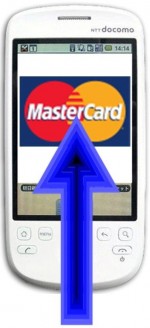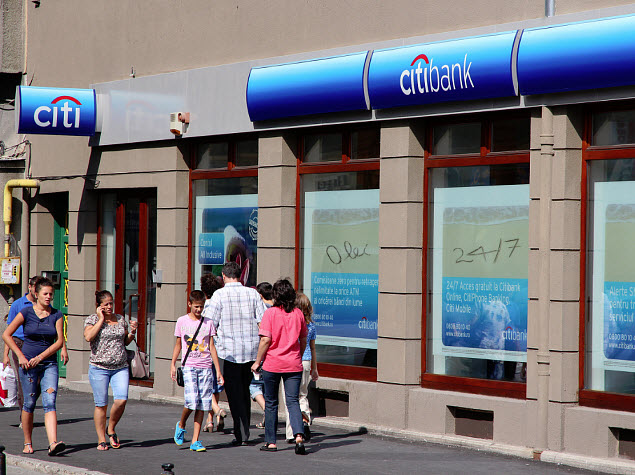The credit card giant recently announced the beginning of a massive database for mapping available applications.
MasterCard unveiled its intentions at the World Retail Congress to begin a Europe-wide mobile app index that will map all of the shopping applications that are publicly available in Europe.
The name of this effort will be the Mobile Top App Index by MasterCard.
The purpose of this mobile app index will be to help to identify some of the best shopping applications that are available throughout the diverse European marketplaces. It is also meant to help to pinpoint some of the ways in which consumers in that part of the world are adopting and using their smartphone and tablet technologies as the shop while they are on the go. The top mobile commerce apps in Europe will be broken down into twenty different categories and are going to be announced next March at the Mobile World Congress.
The company hopes that its mobile app index will help to highlight some of the winning solutions out there.
 According to the MasterCard Europe president, Javier Perez, it has never been easier to purchase products and services through the use of mobile devices, “as innovation goes hand in hand with growing consumer demand.” He went on to explain that “MasterCard is a technology company connecting banks, retailers and consumers. Our Mobile Top App Index will highlight the most outstanding solutions in the mobile shopping app arena for the benefit of European consumers and retailers.”
According to the MasterCard Europe president, Javier Perez, it has never been easier to purchase products and services through the use of mobile devices, “as innovation goes hand in hand with growing consumer demand.” He went on to explain that “MasterCard is a technology company connecting banks, retailers and consumers. Our Mobile Top App Index will highlight the most outstanding solutions in the mobile shopping app arena for the benefit of European consumers and retailers.”
The ratings in the index will be applied to mobile commerce apps across thirty six different countries in Europe. This will be the result of the efforts of a dedicated team of experts from the company, in conjunction with Associate Professor (Reader) in Digital Innovation, Dr. Carsten Sørensen, from the London School of Economics and Political Science. Dr. Sørensen stated that the great diversity in m-commerce applications “fundamentally changes the way people think about their tasks.”
Dr. Sørensen also added that since shopping is among the activities that device users do quite regularly, this new index could potentially assist consumers in being able to find exactly the mobile app they require and it will become a driver for the industry as a whole.
Denny |
September 30, 2014
These products will be available exclusively to customers who will access them over their smartphones and tablets.
As much as online bill paying and digital transaction processing have become exceptionally commonplace, mobile banking has been experiencing a relatively slow adoption, comparatively speaking.
Some tenants are now capable of paying their rents electronically to skip paper checks, but smartphones aren’t there yet.
That said, as companies behind mobile payments work very hard to encourage consumers to use their smartphones instead of credit or debit card, a rising number of options are becoming available. Many are hopeful that the recent release of Apple Pay, along with the NFC enabled iPhone 6 will help to convince consumers to use this type of technology. At the same time, Citibank is looking at a mobile banking option that provides an account that is exclusive to smartphones and tablets.
The mobile banking account is called Access and Citibank has made it exclusively for these device users.
The primary market for the Access accounts are the Millennial generation, which typically down even own a checkbook and that are very used to paying their bills and making purchases online. This generation is also very comfortable with completing a large range of different tasks through the use of their smartphones and tablets.
Millennials are actually the biggest age-based demographic that are compete non-users of paper checks. Overall, though, 32 percent of consumers still use a paper check to pay at least one bill, whereas slightly more – 38 percent – pay at least one bill electronically.
As a whole, 12 percent of all Americans have said that they do not use their checkbook – regardless of whether or not they ever had one. Many of those who do still use checks use them for only one or two bills every month. Among the most common uses for this type of transaction is to pay rent.
Citibank is now seeking to move this type of transaction in a new direction with mobile banking and is aiming this product at the demographic that is most likely to be open to adopting it. According to the Citi U.S. chief operating officer of retail banking, Robert Beck, “We developed Access after spending a lot of time listening to customers and looking at their banking needs, and we identified several trends.”
 According to the MasterCard Europe president, Javier Perez, it has never been easier to purchase products and services through the use of mobile devices, “as innovation goes hand in hand with growing consumer demand.” He went on to explain that “MasterCard is a technology company connecting banks, retailers and consumers. Our Mobile Top App Index will highlight the most outstanding solutions in the mobile shopping app arena for the benefit of European consumers and retailers.”
According to the MasterCard Europe president, Javier Perez, it has never been easier to purchase products and services through the use of mobile devices, “as innovation goes hand in hand with growing consumer demand.” He went on to explain that “MasterCard is a technology company connecting banks, retailers and consumers. Our Mobile Top App Index will highlight the most outstanding solutions in the mobile shopping app arena for the benefit of European consumers and retailers.”

